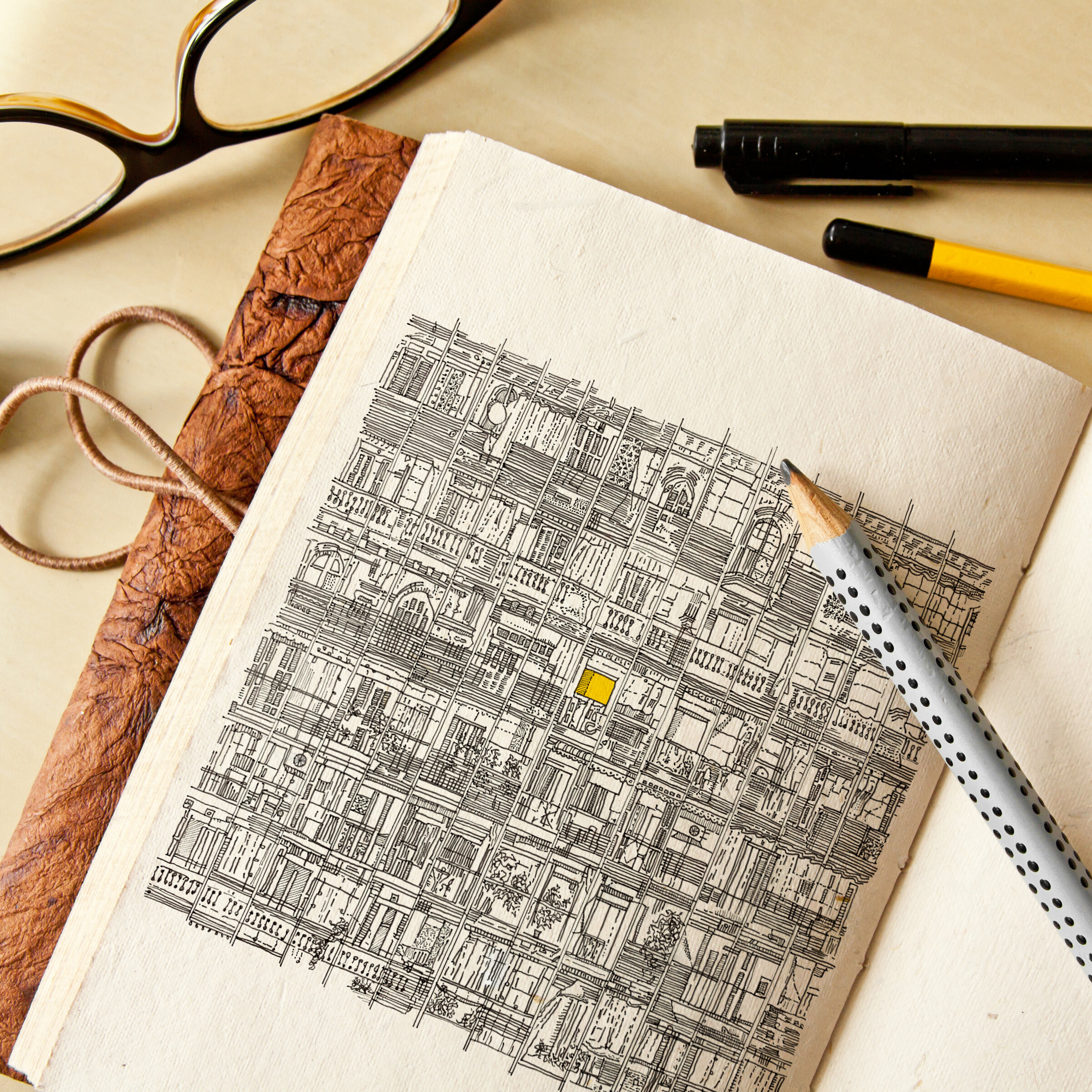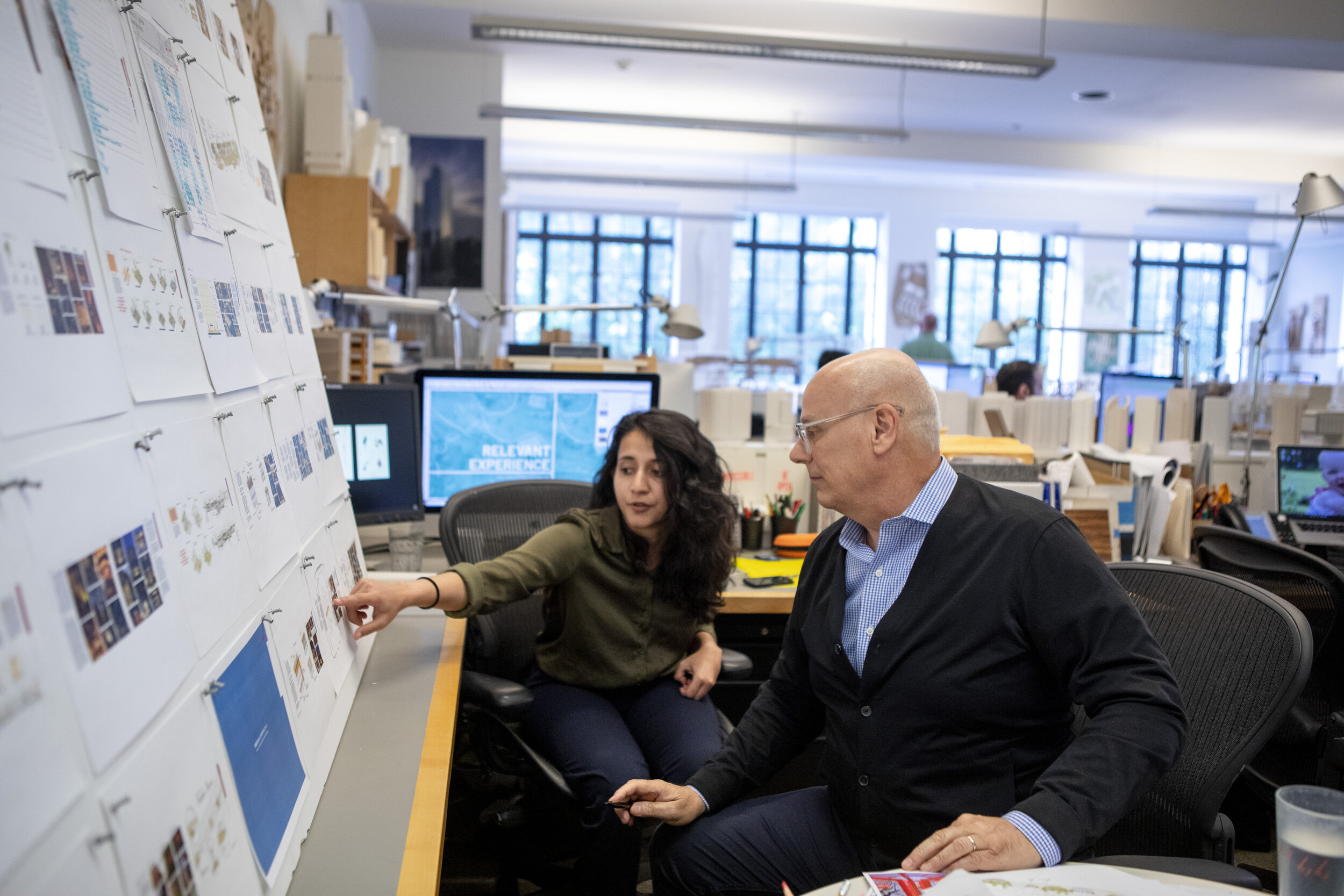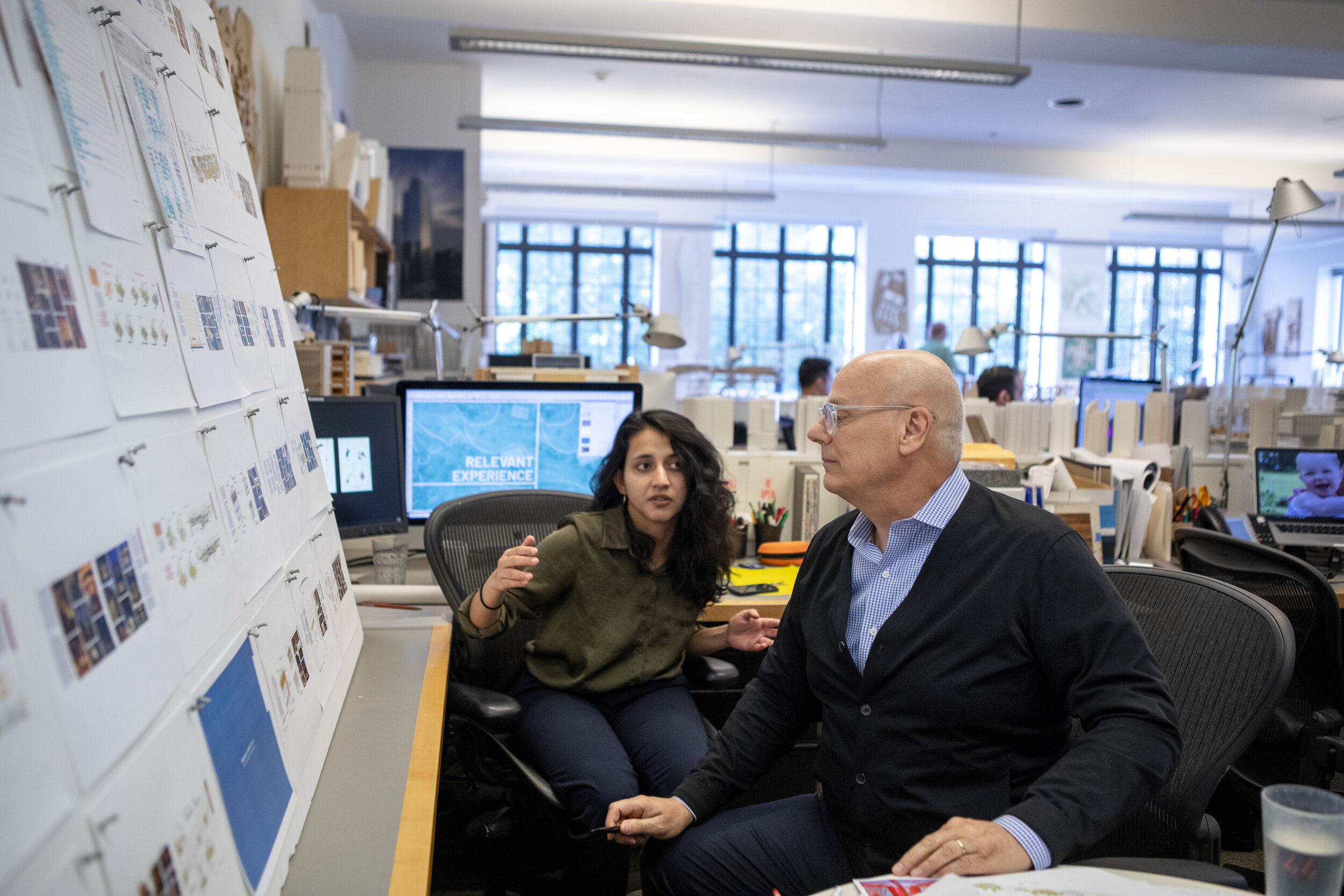AASHTI MILLER
Portrait courtesy of Aashti Miller.
Aashti Miller is an architect by day and an illustrator by night. She was born and raised in Mumbai (India) and studied Architecture at Cornell University in Ithaca, New York. She is a licensed Architect in the United States and India, and the sole force behind MillerInk, a graphic design and illustration studio. She 'constructs' her drawings in an attempt to unite her two seemingly disparate worlds.
Merging Architecture with Illustration
What inspired you to pursue a career in architecture?
Like many people in the field, what attracted me to Architecture was the idea that I could unite my passion for science and art. I do not think Architecture is either of these disciplines, but it borrows the spirit of both in a unique way. Secondarily, my father is an architect and my mother, a fine artist, so Architecture just seemed like the right fit for me. What surprised (and delighted me) when I started my course, is that so many students pursuing the major, did not have a specific idea of what they wanted to do in life; much like me, they came in with an inkling of what they liked, and so we’re using their time in school to figure out the best path forward. Oddly enough, 8 years later and still working in the field, I still view my choice to pursue it as an ongoing experiment. I have come to understand the tremendous value of the uncertainty and lack of control inherent to any design discipline.
MillerInk - The Ship of Theseus. Exploring the idea of digitalizing our essence after death: what if an algorithm was able to replace us after we pass, continuing to create content consistent with who we are? Image courtesy of Aashti Miller.
Throughout architecture school, many develop a love-hate relationship with the industry. What did you love about architecture school?
I loved how hyper-intellectual architecture school was. I was able to learn something new every single day. Almost everyone in any study can say this, but I think the hands-on nature of architectural education ensures a deeper absorption of new information. I also loved that what started as an interest in art and physics, evolved into the opportunity to explore a wide range of subjects such as representation, theory, history, philosophy, and culture. Like being in an incubator, I was pushed to evaluate who I was, what I liked, and who I wanted to be very quickly. Being surrounded by so many smart and talented individuals helped me evolve my skill in pursuit of my own distinct voice and style. I met a group of radically different, yet like-minded people, who are talented in so many unrelated creative fields (tattoo artists, YouTubers, furniture makers, etc.), and learning from them every day was a real privilege.
MillerInk - The Post Office. Rethinking the future of the office typology: will it even exist at all. Will consumption, excess, and leisure will overtake our daily lives? Is work so profoundly embedded in our mode of operation that we will simply invent new forms of work for the sake of work? Image courtesy of Aashti Miller.
What did you dislike?
My biggest hesitation before starting Architecture school was that it would be too competitive for me and that I would be swept up in a wave of anxiety and self-doubt. It is why I reconsidered where I wanted to study so many times before committing to a decision. Ultimately, I ended up in one of the most competitive programs in the US, and my initial fears were not unfounded. It is tough for an 18-year-old to go from being the best at art and physics in high school to being the middle-of-the-pack in college. Meanwhile, students who had previously taken a summer course at the school excelled. It was very demoralizing to realize that even in your freshman year (which is supposed to be at the very least, neutral and equalizing), there are some who do have a leg up. Public reviews at the start of the year were intentionally crafted to breed an intense competitive spirit, which was very difficult for me to cope with for many years in school.
MillerInk - Iconostatis I. Image courtesy of Aashti Miller.
MillerInk - Iconostatis II. Image courtesy of Aashti Miller.
Looking at how religion and consumerism are now two sides of the same coin, with a consumeristic form of life performing the religious function of providing man with fleeting answers to the existential problem of meaning.
What are a few things that should change within the education system to alleviate stress from students?
I think it is vital to have personnel trained in wellness and mental health on the staff. I remember feeling intensely overwhelmed by the long hours and debilitating stress and not having anyone to talk to other than my classmates (who were also feeling the same thing) – it would have been wholly beneficial for us to have a trained professional to talk to during these phases of intense frustration and doubt. I think it should also be required that professors have some training in this as well, as the belief that students now have it easier than our professors did when they were in school - and so should be able to ‘handle it’ - is quite pervasive. Another source of stress is the uncertainty behind the professional options design students have after graduating. Although many schools do have career offices, there isn’t nearly enough emphasis as there should be on alternative options available to new graduates. Out of my class of 50 students, only 1 ended up in a non-architecture job right after graduation. Today, about 75% of my class is not working in the field anymore. Opening the lines of communication early on and making students feel comfortable to discuss their realities, anxieties, and fears of the future is a very achievable way to alleviate stress for students.
MillerInk - Conrad Collaboration. Reinterpreting the Conrad hotel’s famous sushi dish. If you look at the image holistically, it represents a single piece of sushi. Everything contained within is what each bite brings - a little bit of art, history, nature, and culture. Image courtesy of Aashti Miller.
What has the architecture school and profession taught you about yourself?
I think architecture school and the profession have taught me the value of persistence in the face of adversity. In school, you are pushed to produce even when you feel that you are tapped out, and are often able to create magic in these moments. When I studied for my ARE’s it was almost easy for me to slip back into a similar approach – I had a goal and I believed that with persistence, I would be able to achieve it. Most importantly, what I learned was that if there is a task, assignment, or even a drawing I am passionate about, I am happy to stay up all night finishing it (not an approach I advocate!). Conversely, if there is something I feel like I just ‘have to finish’ it will never turn out as good. Although persistence is a great quality, one must clearly define their boundaries in order to have time left over for themselves. This often involves saying no, something that I have learned over my time in the profession, continue to understand the value of every single day and hope to implement more in the future.
MillerInk - Living Windows I. Image courtesy of Aashti Miller.
MillerInk - Living Windows II. Image courtesy of Aashti Miller.
MillerInk - Living Windows III. As an architect, I have always been fascinated by windows: each one an artwork that serves as an expression of its inhabitants - who they are, what they do, and how they live. This series is a collection of windows that I have observed, curated, and redrawn. Image courtesy of Aashti Miller.
When looking for jobs, we all make sure that we will continue to grow and be the best versions of ourselves. As an architectural designer, how has Pickard Chilton encouraged you to pursue your passions within design projects?
After graduating, I joined Pickard Chilton as an architectural designer. I was lucky enough to find a workplace that encouraged me to simultaneously pursue my specific passions within the design (graphics and illustration) and broaden my architectural education. My mentors and colleagues were encouraging, warm, and familial, which created a very open learning environment. This was especially important for me being so far away from home. Thanks to this work culture, I pursued and received my license to practice architecture in the US within 2 years of joining the firm. At the same time, I was spending most of my weekends drawing for design competitions, creating wild and speculative illustrations that trod the fine line between architecture and graphics. Pickard Chilton created an environment where I felt comfortable being steeped in various forms of design 24/7 (a prospect which terrified me in architecture school) – although overwhelmed at times, I was never uninspired or creatively stagnant.
MillerInk - Speculative Landscapes II. An ‘art-chitectural’ hand drawing that looks at how simple lines and shapes can compound into a speculative cartography. Image courtesy of Aashti Miller.
What is the importance of working in an open learning environment?
During several of my internships, I found myself lost, unable to find anyone who was willing to answer my questions or help me understand what I was doing. I came away from these experiences confused about whether I wanted to be an architect at all. Conversely, on my first day at Pickard Chilton, I was assured that there are no stupid questions, which ended up being my key takeaway from my entire time working there — curiosity is as important in a professional setting as it is in an academic one and making yourself heard (even when you feel uncomfortable doing so), is essential. If you find a workplace where this is encouraged and celebrated, it is probably the best environment for you to be in for as long as possible. An open learning culture is not just one where you feel comfortable asking other people questions; it is also where others have no ego when helping you and feel like they learned something from the process themselves. I believe this is the only way to be truly excited and engaged by what you are doing every day. After moving back home to India in 2019, I continue working with Pickard Chilton and I still feel like I am a part of this positive studio culture even from so far away. This is especially important with the shift towards work-from-home all over the world.
MillerInk - Grand Complications. A reminder that we are strong in spite of, and because, we are complicated. Image courtesy of Aashti Miller.
Aashti in Motion. Image courtesy of Aashti Miller.
Tell us about MillerInk. What inspired you to create it?
At Pickard Chilton, I found that I enjoyed working on diagrams and presentation layouts, and I discovered my affinity for graphic design. The design partner and project managers I worked with under-recognized this and gave me the freedom, means, and guidance to explore exciting ways to present information to our clients and collaborators. When I returned to India, I wanted to pursue this further, and so I started MillerInk. Within a few months, what started as a personal graphic design side-hustle, has grown beyond my wildest expectations. I have had the opportunity to work with some amazing clients on projects ranging from branding to puzzle art to wall murals to marathon medal designs. It has been so rewarding for me to pursue my love for art, design, and architectural representation in an unconstrained way and the fact that people have been so receptive to it continues to surprise and delight me.
Pickard Chilton. Images courtesy of Aashti Miller.
Aashti Presenting at Pickard Chilton. Image courtesy of Aashti Miller.
How do you hope to merge MillerInk into the architectural professional practice?
My most exciting projects are the ones where my love for both architecture and graphic design collide in an unexpected medium. Although I have found that the fields are complimentary (it’s hard for me to think of one without thinking of the other), it is extremely time-consuming to juggle both. Working with clients around the world has resulted in me keeping strange and inconsistent hours. As an anxious creative, this tends to be very challenging for me, and I am still learning to manage my own expectations. I hope that I can bring the 2 together even more in the future - to make my life and work a little easier of course, but also to show my audience something they haven’t seen before. My illustration skills have evolved just through the countless hours of drawing, and this is something I try to bring to my architectural work with Pickard Chilton whenever possible.
Aashti during her studies at Cornell. Image courtesy of Aashti Miller.
Aashti during her studies at Cornell. Image courtesy of Aashti Miller.



















